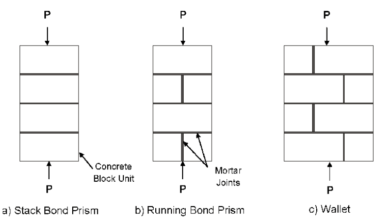How to Vet a Tenant: A Comprehensive Guide to Screening for the Perfect Renter

Introduction to Tenant Screening
Tenant selection is a crucial procedure that depends on the landlords and property management companies seeking to find good tenants to occupy their units to avoid default of rent payment and property damage. The right selection of tenants can always guarantee that the property is occupied only by those who will stick to agreements and respect the property by paying the required rent as well as making repairs when necessary. In this article, let us look at learning the fundamental and some of the most helpful strategies or steps on how one is apt how to vet a tenant looking at screening applications, background checks, and financial reliability checks.
The truth is that tenant screening is very important.
Tenant selection that is thorough is an essential requirement in the management of tenanted properties and the overall rental experience. When reviewing tenants, one can reduce instances of rent defaults, damage, and lessor–tenant disagreements. Tenant screening also enables potential for other difficulties in the future to be spotted such as a past record of getting evicted or involvement in criminal activities. Screening applicants is a good practice that is employed to see that only suitable applicants are identified, thus making the renting process fruitful and less fraught.
Reviewing Rental Applications
The first procedure of tenant screening involves looking at the tenancy application forms critically. In most cases when the tenant fills out an application, he or she will include their personal data, working and income status, and previous residences and feel free to recommend others. This information should be reviewed thoroughly in order to make an adequate decision concerning the applicant. Check the period of their employment and rental history and focus on such points as gaps or contradictions. A properly and thoroughly filled document tends to mean that the applicant is serious and reliable.
Conducting Background Checks
A tenant background check is an integral part of the tenant screening process because it allows one to obtain important information about the applicant’s behavior. Some of the areas to inquire from may involve criminal checks, credit checks, and eviction record checks. Credit record inquiries are used to establish whether the candidate has a police record to prevent him/her from engaging in criminal activities that may lead to loss or harm to the other occupants or property. A credit check can indicate the competency of the applicant, in regard to his ability to pay rent without fail. Performing a background check will reveal if the tenant has been previously evicted, showing previous rental problems. There are lots of companies on the market; to avoid getting nonconclusive or plain wrong information, use only reliable background check services.
Verifying Employment and Income
It is important to confirm the applicant’s source of income and earnings as a way of determining their affordability to pay the rent. Ask for pay stubs from the last month or two, tax returns, or employment verification letters to substantiate it. It is important to note that the typical guideline to determine the tenant’s qualification states that the gross income should at least be three times the monthly rent. Again, confirm with the applicant’s employer to confirm employment and ascertain the stability of the job. This particular step assists the landlords in the accomplishment of the task of figuring out if the applicant can make the required payments in the long run.
Rental history and reference check
affirmation on rental history and references is used in an applicant’s profile to determine and analyze their behavioral pattern. Various questions should be asked, such as the amount and frequency of payment by the applicant, care given to the property by the applicant, and any problems that were experienced by the applicant during his or her tenancy. Usually, one can pose questions, that are specific to the applicant’s reliability, ability to follow the lease terms and conditions, and other relevant conducts. Previous landlords’ responses can be a good pointer to whether the client is a responsible one or not. Also, personal references provide an opportunity to receive more information about the applicant’s character and reliability.
Evaluation of Red Flags and Negatives that should be avoided
While ASSESSING candidates in the interview process, there should be signs that should alert the employer and or manager to the possibility of problems. Some of the things that are often associated with poor credit include; shifting houses often, a previous record of late payments, or unsolved lawsuits. Potentially interesting inconsistencies could involve its application or the background check results. Any time an applicant has items such as evictions or criminal records these must be taken into consideration and weighed on how these will affect the tenancy. If available, do not overcome your intuition and provide information in order to make the superior decision.
Implementing Fair Housing Practices
During the selection process of the tenants, it is mandatory to follow the laws and procedures of Fair Housing to eliminate discrimination. Discrimination based on race, color, religion, sex, national origin, disability, or familial status is prohibited by the Fair Housing Act. This means that recruiting managers should always maintain objectivity and should not be in a position to be influenced by earlier prejudice. Keeping documentation of the screening process and gaining decisions helps to protect the organization’s legitimacy and obey the legal laws stated for the enterprises. Treating everyone fairly and equally also has a way of helping a landlord gain a good reputation in society, not to mention that it is illegal to discriminate [Source: http://www.hud.gov/offices/fheo/obplizers/fairhousing.cfm].
Making the Final Decision
Once the tenant screening is done, it is advisable to analyze all the collected information to come up with the best decision. Also, issues like the applicant’s ability to pay rent, past lease history, and criminal checks should be taken into consideration. Subtract the applicant’s data from the screening specification you have set to decide if the applicant is qualified enough to join your organization. In case the applicants meet all the requirements, there might be candidates with similar qualifications; therefore you will need to consider other measures like the referees or suitability of the applicants to the property and the neighborhood. It is good to and expertly inform the applicants of your decision, and guide them on how to sign the lease and occupy the house.
Conclusion
Hence, the process of screening a tenant is one of the most important procedures that need to be conducted in order to achieve proper rental outcomes for the landlords and property managers. Through careful scrutiny of the applications, the potential tenant’s criminal background and employment status and income, and the potential tenant’s previous behavior as a tenant, landlords are able to choose good-paying tenants. Following the equal housing opportunity policies and evaluating more possible risky areas also assist in providing a successful and legal process for renting. Effective tenant screening is the best way to protect your investment and at the same time create a good environment that will guarantee long-term profitability and tenant satisfaction. Therefore, following the best practices of managing rental properties that have been described above, landlords can confidently control the rental business and have no worries about how their properties are being managed.





